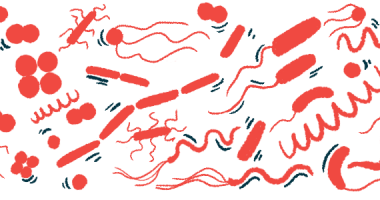IL-8, markers may predict worsening bronchiectasis in CF
Finding offers insights for better treatment and care, researchers say

Certain markers of inflammation found deep in the lungs of children with cystic fibrosis (CF) can help predict how bronchiectasis will worsen over time, offering insights for better treatment and care, a study suggests.
Among other markers, higher levels of interleukin-8 (IL-8), a signaling protein, were best at predicting whether bronchiectasis, an abnormal thickening of the airways walls, would progress within two years.
The study, “Key inflammatory markers in bronchoalveolar lavage predict bronchiectasis progression in young children with CF,” was published in the Journal of Cystic Fibrosis.
CF causes thick mucus to build up in the lungs, where it blocks the airways, making it difficult to breathe and clear out bacteria. Bronchiectasis occurs when the airways get damaged, causing them to widen and become scarred.
Markers of bronchiectasis getting worse
Here, a team of researchers in the U.S. and the Netherlands looked for markers that might predict what children are at risk of bronchiectasis worsening, which could help doctors limit damage to the airways.
“Having predictive markers for a short-term worsening of CF lung disease may also increase the chance to be able to change the course of the disease,” the researchers wrote, noting this could also help prolong survival.
The I-BALL study (NCT02907788) included 37 young children who’d been diagnosed with CF through newborn screening. Ten had a bronchoscopy and chest CT scans available at age 1 and 3, and 27 did at age 3 5 years.
Bronchoscopy is a procedure that allows doctors to look directly at the lungs’ airways using a thin, lighted tube called a bronchoscope. Samples of cells and fluids can also be collected by sending a saline solution through the bronchoscope into the air sacs.
Changes to lung structure were scored on CT scans using PRAGMA-CF, a method to score areas with evidence of damage, which includes a score of the bronchiectasis-affected areas.
An increase of the areas affected by bronchiectasis over two years was associated with markers like the percentage of neutrophils, a type of immune cell, and levels of the proteins IL-8, inducible T-cell costimulator ligand (ICOSLG), and hepatocyte growth factor (HGF).
Of them all, IL-8 had the best balance of sensitivity (82%) and specificity (73%). Here, sensitivity refers to how well IL-8 can predict worsening bronchiectasis in children who actually have it, whereas specificity is the proportion of children who test negative among those who do progress in two years.
The percentage of neutrophils, ICOSLG, and HGF also showed good sensitivity (around 82-85%), but lower specificity (59-67%). The odds of bronchiectasis worsening by more than 0.5% were higher with IL-8 than other markers.
These markers may be “good predictors for progression of bronchiectasis in young children with CF,” wrote the researchers, who said further studies with data from other centers could confirm their findings.








